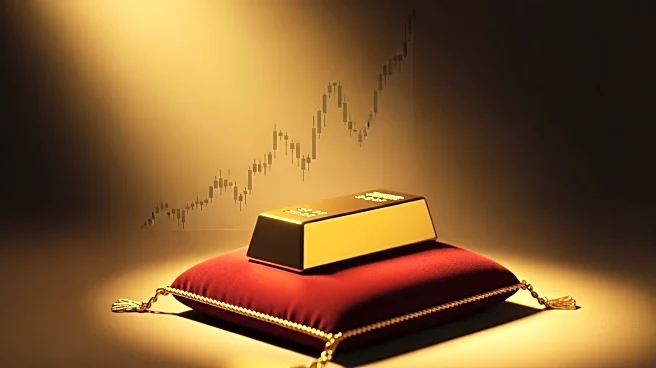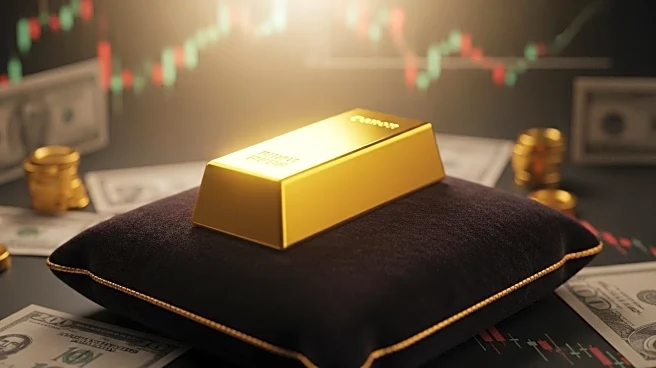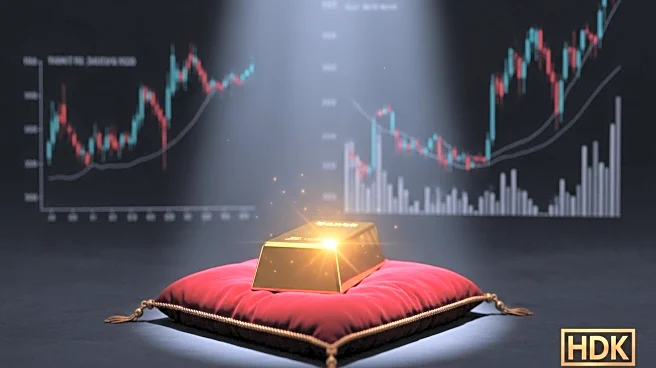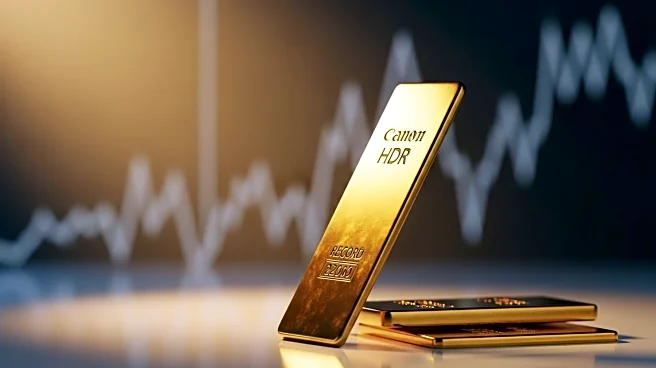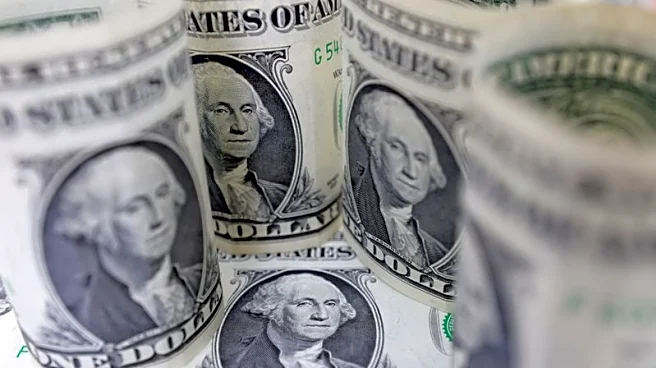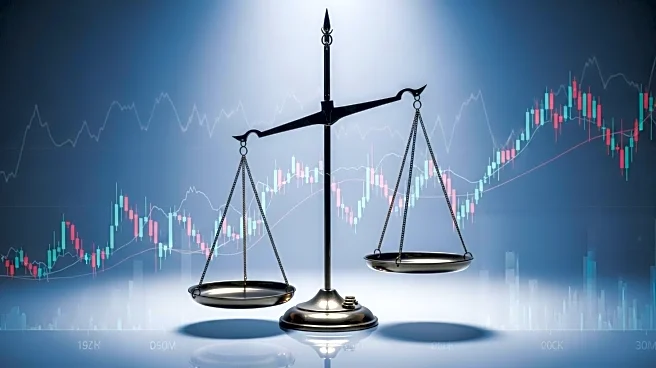What's Happening?
Gold prices have surged to a record high above $4,100, driven by expectations of a U.S. Federal Reserve rate cut and increased safe-haven demand due to renewed trade tensions between the United States
and China. Spot gold rose 0.5% to $4,129.16 per ounce, after reaching a peak of $4,179.48 earlier in the session. U.S. gold futures for December delivery also increased by 0.4% to $4,147.10. The price of gold has climbed 57% this year, surpassing the $4,100 mark for the first time, fueled by geopolitical and economic uncertainties, strong central bank purchases, and robust exchange-traded fund inflows. Analysts suggest that further dovish surprises from the Federal Open Market Committee (FOMC) meeting could push gold prices even higher.
Why It's Important?
The rise in gold prices reflects broader economic and geopolitical uncertainties, particularly the ongoing trade tensions between the U.S. and China. As a traditional safe-haven asset, gold's surge indicates investor concerns about potential economic instability and the impact of trade disputes. The anticipation of a Federal Reserve rate cut further underscores the challenges facing the U.S. economy, including risks to the labor market. Lower interest rates typically benefit non-yielding assets like gold, making them more attractive to investors seeking stability. The situation highlights the interconnectedness of global trade policies and monetary decisions, with significant implications for financial markets and economic stakeholders.
What's Next?
Investors are closely monitoring upcoming events, including Federal Reserve Chair Jerome Powell's speech at the NABE annual meeting, for insights into the central bank's monetary policy direction. The potential for further rate cuts could continue to influence gold prices and investor behavior. Additionally, the scheduled meeting between President Trump and Chinese leader Xi Jinping in South Korea may impact trade negotiations and economic relations between the two countries. Analysts predict that gold could reach $5,000 per ounce by 2026, suggesting continued volatility and uncertainty in the market.
Beyond the Headlines
The surge in gold prices also reflects broader concerns about the global economy's resilience in the face of geopolitical tensions and trade disputes. The situation raises questions about the long-term sustainability of current economic policies and the potential need for more aggressive monetary interventions. As central banks continue to buy gold, the dynamics of global financial reserves may shift, influencing currency values and international trade balances.
